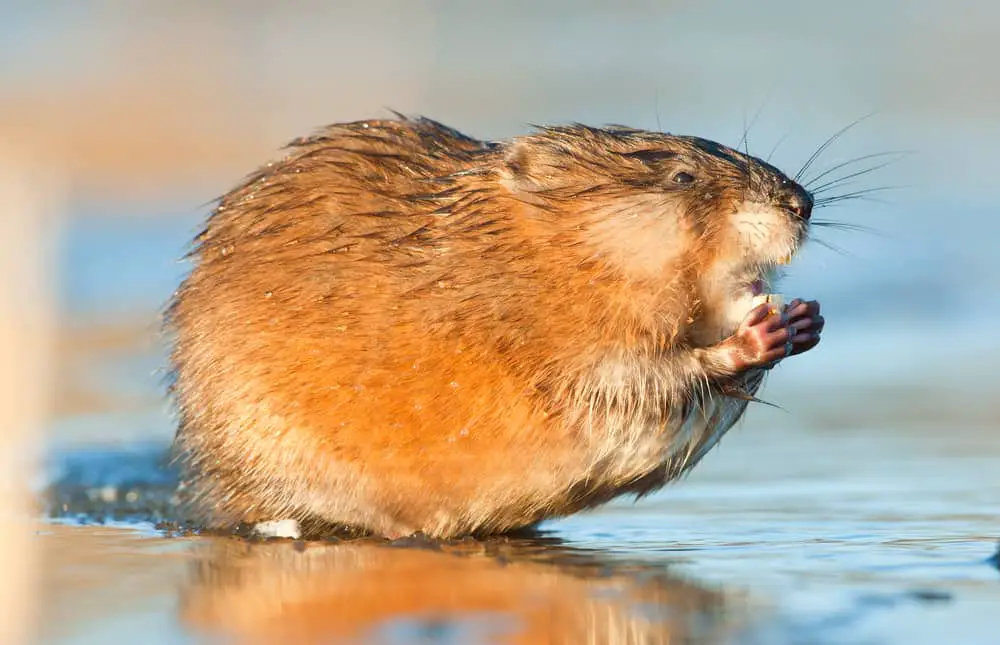
Muskrats are large aquatic rodents that live primarily in North America. They can be found in wet environments such as marshes, swamps, lakes, and ponds. Their diet is mostly a vegetarian one, consisting of various plants. Some of these plants include grass, sedges, and cattails.
Even though they’re known to be bigger rodents, they only weigh about four pounds and are about 16 to 25 inches long. They work hard to find food and make a shelter to stay alive. The average lifespan of a muskrat is about 3 to 4 years.
Table of Contents
- Groundhog
- Nutria
- Beaver
- North American river otter
- European water vole
- Capybara
- Rakali
- Gray squirrel
- Pocket gopher
- Moles
- Field voles
- Minks
- Black rats
- Golden-bellied water rat
- Marsh rabbits
Groundhog
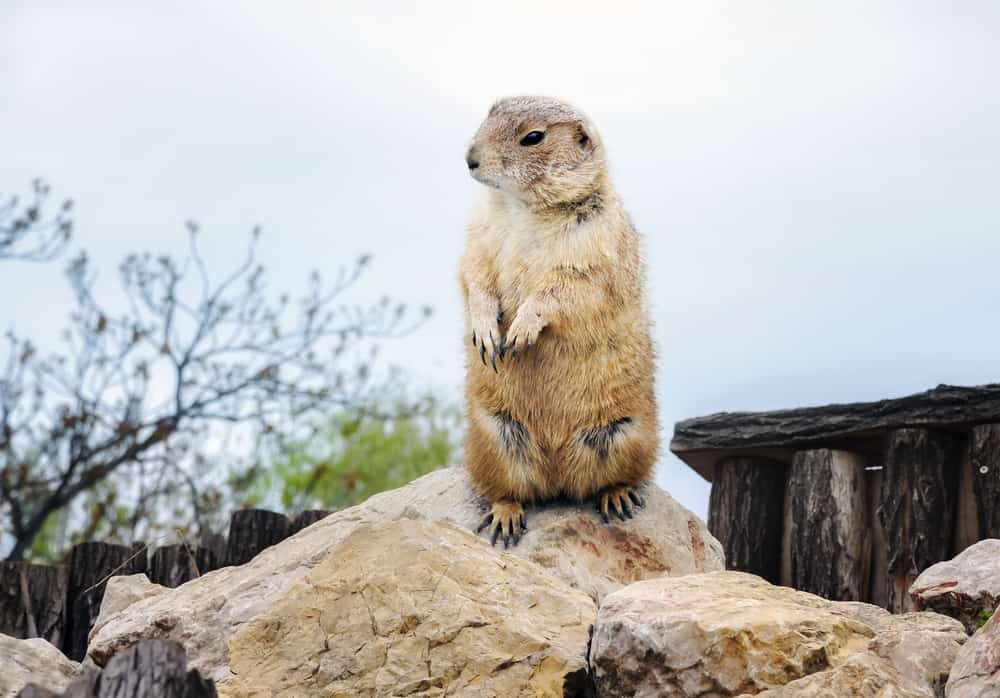
Groundhogs are moderate-sized rodents with light brown fur. They are part of the Sciuridae family, which means they are found in most parts of North America. Groundhogs tend to reside in open areas like fields and grassland. They burrow and build dens for protection from other animals in their habitat.
Groundhogs are omnivores that eat a mostly veggie diet. Groundhogs weigh about 13 pounds and can grow up to 20 inches. Groundhogs can be vocal at times but are more quiet and solitary animals. A successful lifespan for this species is about 2 to 3 years.
Similar:
- Omnivorous diet
- Rodents
- Lifespan is shorter
Different:
- Groundhogs don’t live an aquatic lifestyle
- Muskrats aren’t known for digging as much
- Muskrats are more nocturnal, groundhogs are more diurnal
Nutria
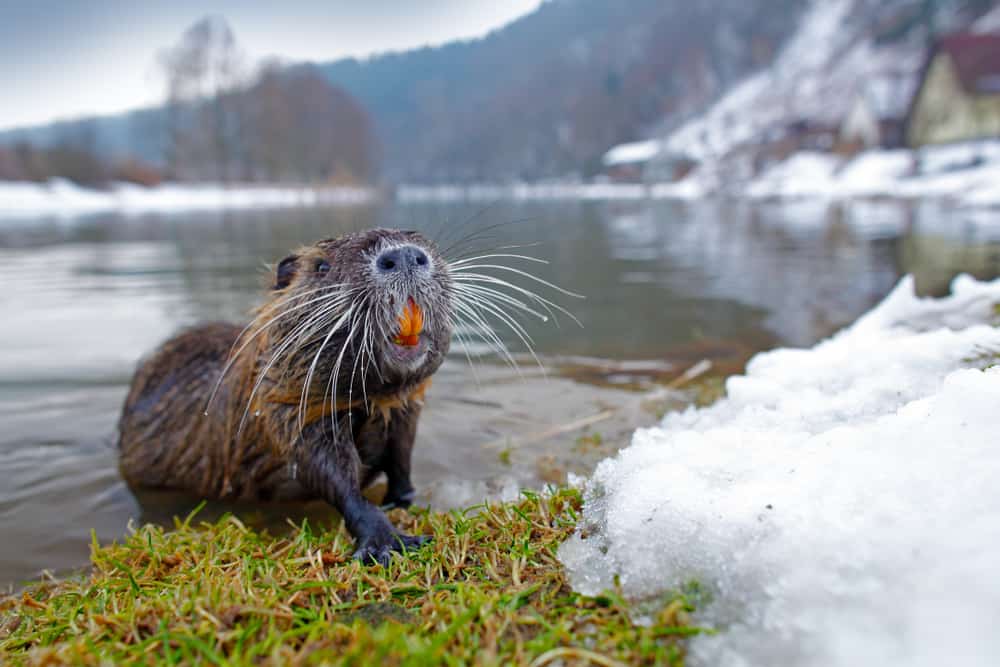
Nutrias have many similarities with the muskrat. The rodents are indigenous to South America and can be found on multiple continents. Water-filled ecosystems are where they can be located, such as marshes and wetlands.
Most of the nutria’s meals are vegetation that can be found in their own environment. Small water species such as mussels are also a part of their diet. Nutrias are medium in length and weight, measuring around 2 feet long and weighing 12 pounds.
Nutrias cannot see very well, so they communicate in more physical ways to compensate for their limited sight. The average lifespan of the nutria is about 6.5 years.
Similar:
- Live in water ecosystems
- Rodents
- Mostly herbivorous diet
Different:
- Nutrias live a little longer
- Nutrias are indigenous to South America, muskrats are indigenous to North America
- Muskrats weigh considerably less than Nutrias
Beaver

Beavers are large rodents best known for their unique tails. They live in areas that contain water and resources to build a dam. Beavers are found in most of North America.
They are much bigger compared to the other rodents on this list, weighing about 35 to 65 pounds. The average length of the beaver can be about 39 to 47 inches. They are herbivores, which means they snack on different types of vegetation and brush in their home.
To talk to one another, beavers hit their tails and use verbal sounds. On average, a beaver can live about 16 years in the wild.
Similar:
- Water rodents
- Live primarily in North America
- Build structures for shelter in the water
Different:
- Beavers weigh a lot more
- Beavers have more distinct tails
- Muskrats have a shorter lifespan
North American river otter
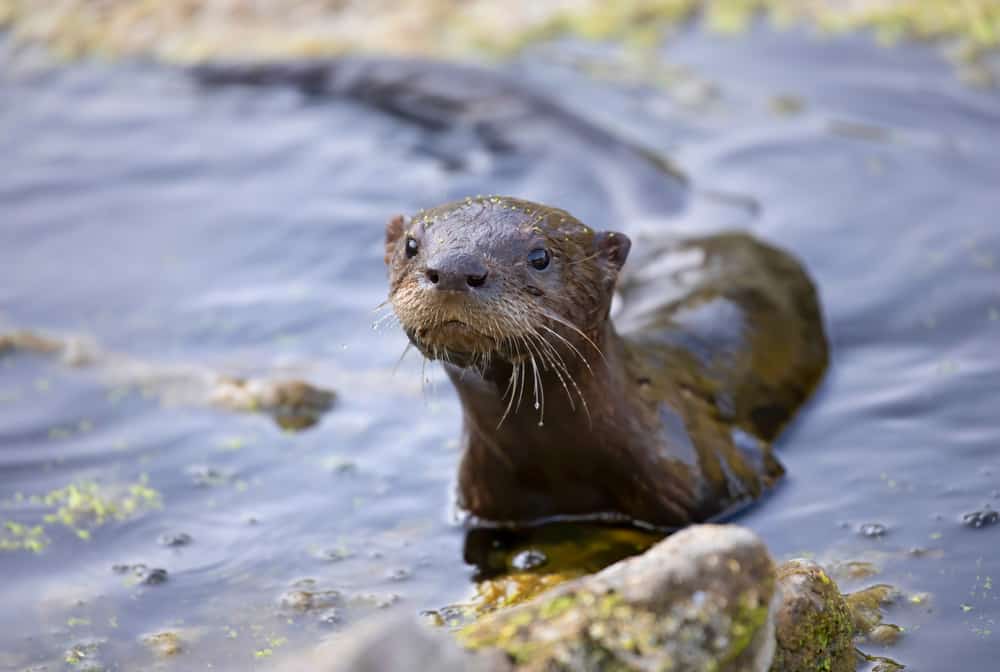
North American river otters are mammals known for their strong swimming skills. They can be found on every continent except Antarctica and Australia. Water habitats are where they can be seen the most, such as lakes or rivers.
Their diet includes frogs, fish, bugs, and turtles. On average the North American river otter can weigh about 11 to 30 pounds. Their length can vary as well, but most reach a maximum length of 4 feet.
River otters communicate with each other by making sounds and releasing a smelly scent. A lifespan of a North American river otter can be 8 to 9 years.
Similar:
- Release an odor to communicate
- Live by water
- Feed on the different resources in their respective habitats
Different:
- Muskrats are mostly vegetarian, river otters are mostly carnivorous
- River otters are bigger
- River otters have double the lifespan
European water vole
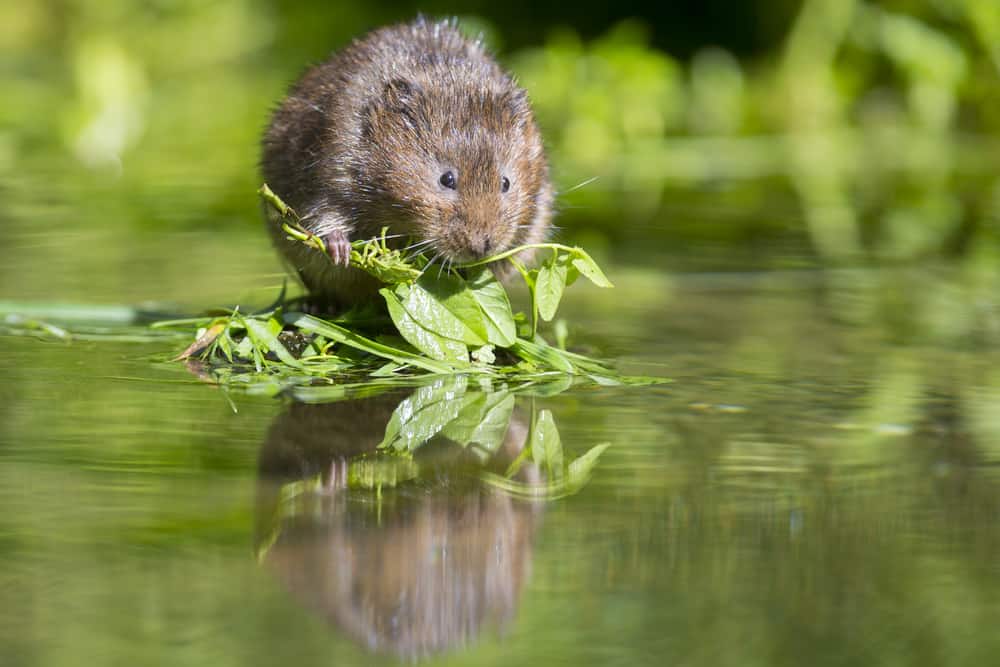
The European water vole is an aquatic rodent that lives in various parts of Asia and Europe. They can be found in environments that contain a body of water, like streams and rivers. During the day they work to find food and improve the burrow.
To communicate and show dominance they mark their territories. These petite animals only weigh 8 to 14 ounces and have a length up to 9 inches. Their main food sources are the types of plants and grasses that are found in their habitat. They live a short life of about 5 months.
Similar:
- Aquatic rodents
- Mark territories to show dominance
- Eat plants/grasses
Different:
- Muskrats are larger
- Muskrats live a longer life
- Both species live on different continents
Capybara
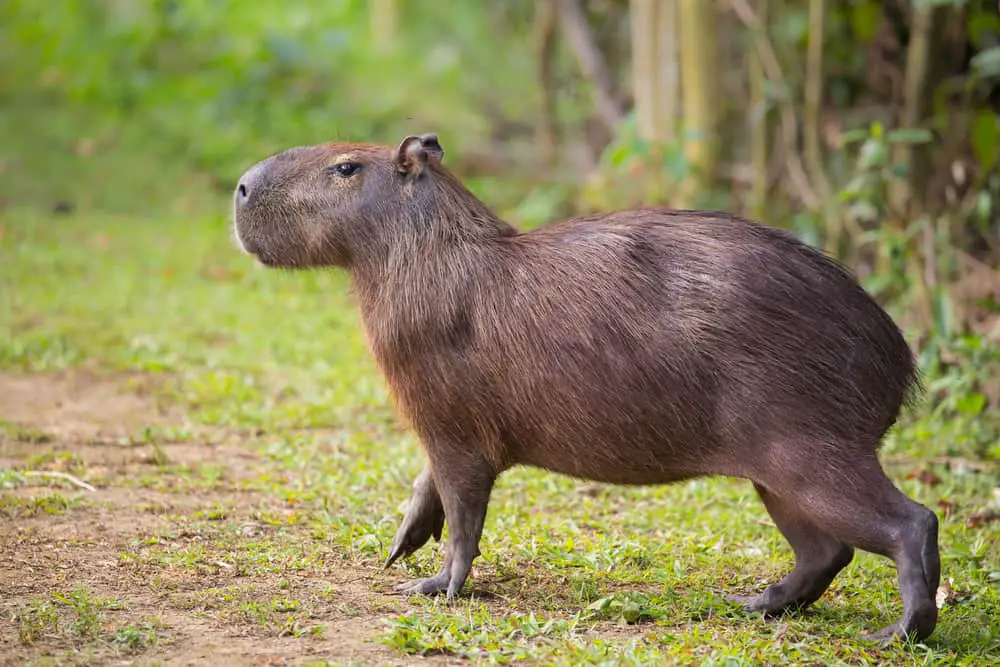
The capybara is the heaviest and longest rodent on this planet. They can weigh up to 100 pounds or more and stand at 2 feet tall. They are most commonly found in regions located in South America. They can be found in lakes, rivers, or swampy areas.
While foraging for food they try to find lots of plants to accommodate their herbivore diet. Capybaras stay in small groups most of the time, and the adults are in charge of watching the babies and making sure they stay out of trouble from predators. It usually lives about 10 years in the wild.
Similar:
- Can be found in areas with water
- Herbivore most of the time
- Active and always looking for more resources
Different:
- Capybaras weigh much more
- They’re located on separate continents
- Capybaras have a longer lifespan
Rakali
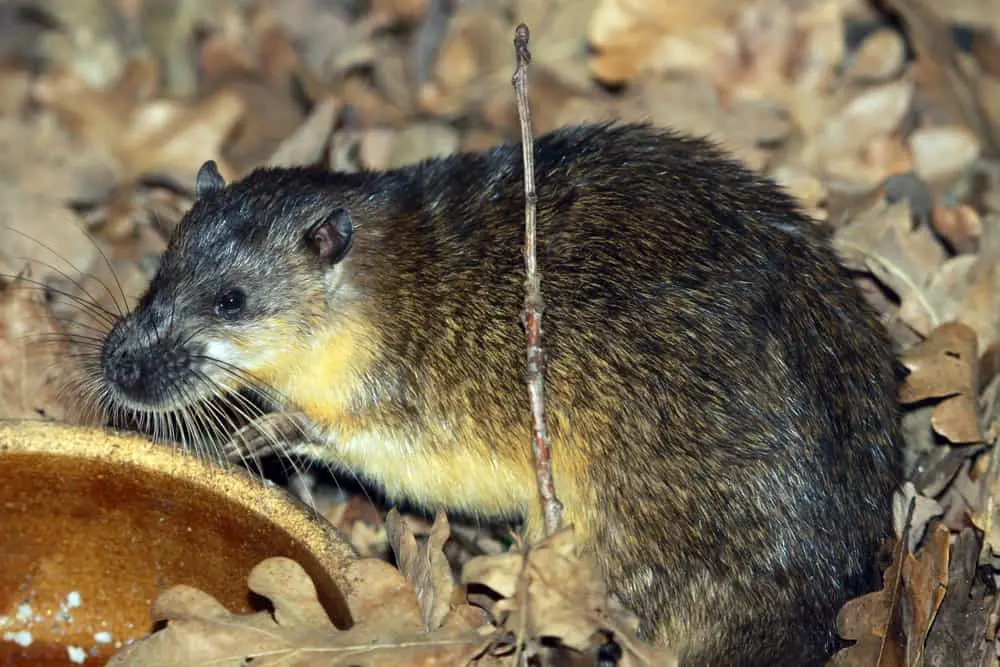
Rakali is a rodent that is native to parts of Australia and other islands. They are found in water habitats, varying from estuaries to freshwater creeks. Their primary diet is a carnivorous one. They eat small animals such as birds, frogs, and fish.
Rakalis are most active in the hours of dusk, but can occasionally be seen during the day. They’re a territorial species, so fighting for food or shelter is not unusual. On average they are 9.1-14.6 inches long and weigh about 12 to 45 ounces. A normal lifespan for this species is 3 to 4 years.
Similar:
- Most active at later hours
- Same average lifespan
- Thrive in water ecosystems
Different:
- Native to different continents
- Rakali are carnivores, muskrats are mostly herbivores
- Muskrats are slightly larger
Gray squirrel
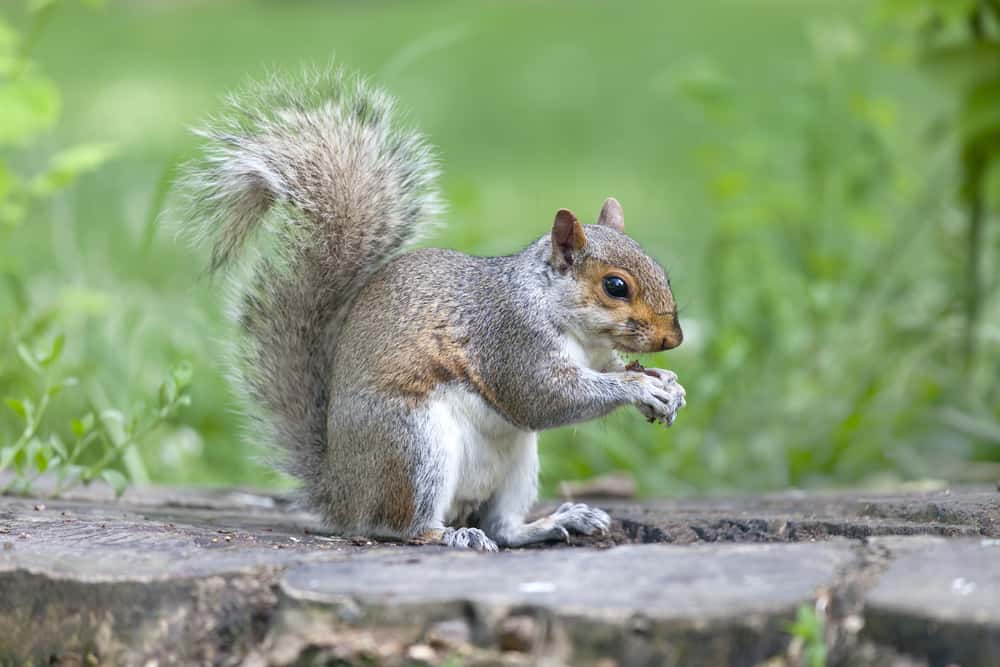
The gray squirrel is found in the eastern parts of the United States and some parts of Canada. These animals reside in forests and areas with lots of trees. Gray squirrels feed on several types of nuts, grains, seeds, and plants.
Their strong senses help them stay away from predators and find food. To communicate with others of their kind, gray squirrels will use body movements and sounds. They’re moderate-sized mammals, measuring 15 to 20 inches including their tail and weighing anywhere between 0.5 of an ounce to 4 pounds. The average lifespan is about 6 years.
Similar:
- Found on North America
- Weigh about the same
- Mainly eat plants and seeds
Different:
- Gray squirrels make shelter in trees
- Gray squirrels have a longer tail
- Muskrats have brown fur and this species of squirrel has gray
Pocket gopher
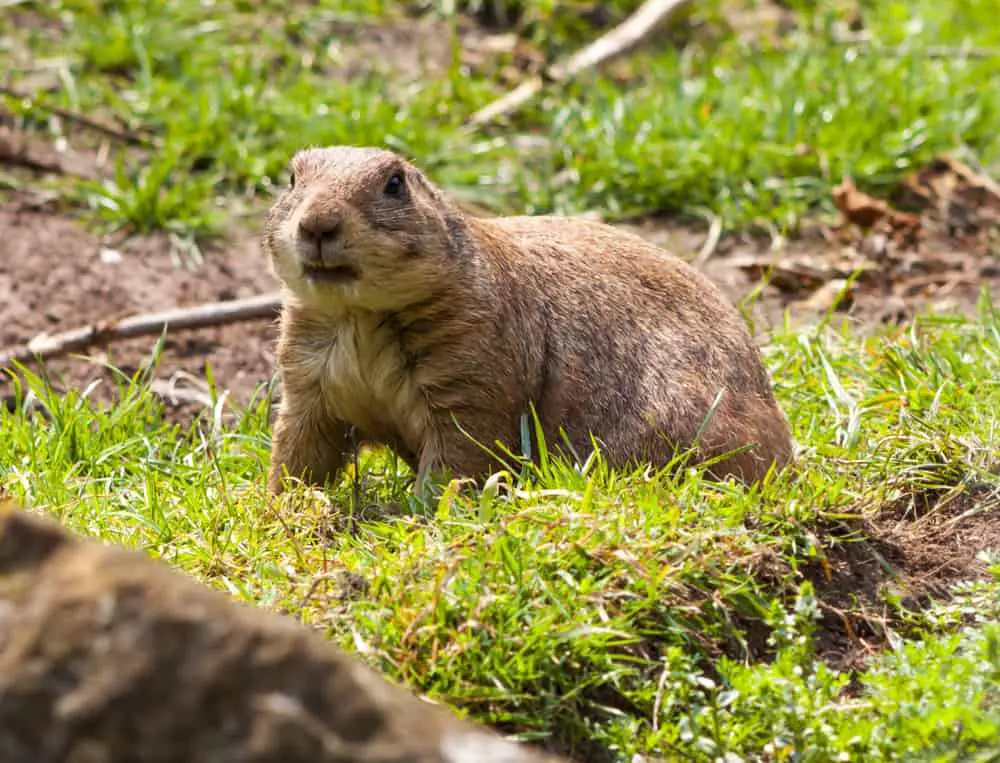
Pocket gophers are small rodents that are indigenous to North America. Within the continent, they are seen more often in the Great Plains area. They stay in habitats with shelter and loose soil.
Pocket gophers have a length of about 5 to 14 inches and weigh around a pound or more. They eat a variety of plants they can find in their environment. An average lifespan for a pocket gopher is 3 years or less.
Similar:
- Rodents
- Native to North America
- Herbivores
Different:
- Pocket gophers are known for burrowing
- Muskrats live by the water, pocket gophers don’t
- Pocket gophers weigh less
Moles
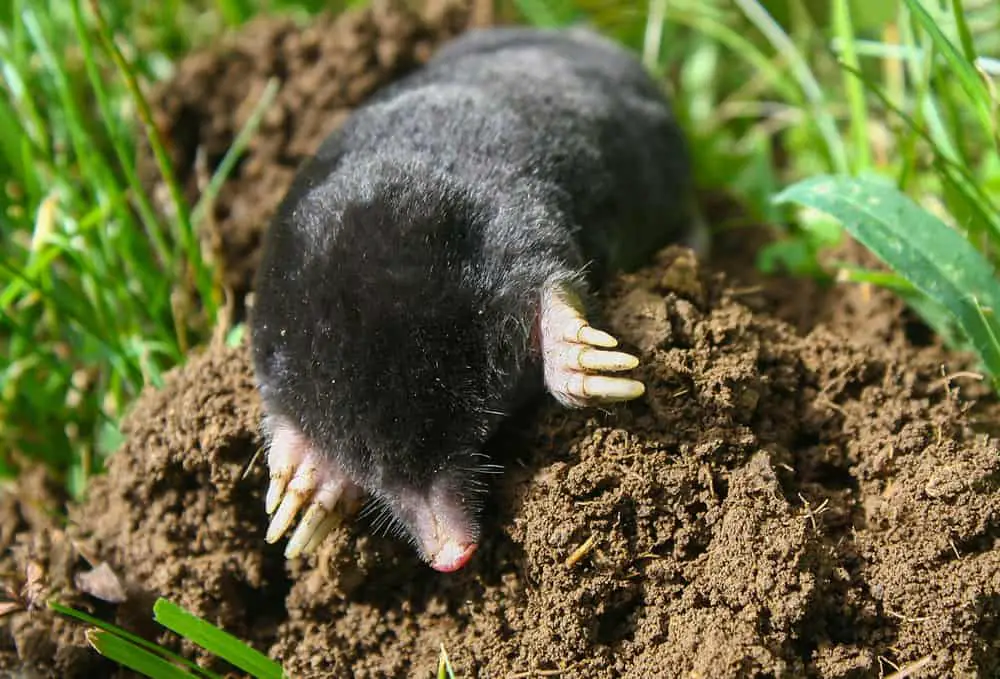
Moles are mammals that are mostly found in the United States. They tend to find areas with soil and dirt to burrow in. They work most of the day to burrow underground tunnels, while also trying to find food. They eat bugs that can be found in their habitat.
The average mole can weigh 2.5-4.6 ounces and have a total body length of 6 inches. Moles are solitary creatures, but to communicate with one another they use vocalizations. A mole can live around 3 to 4 years in the wild.
Similar:
- Same lifespan
- Found in the US
- Solitary
Different:
- Moles burrow more
- Muskrats are bigger
- Muskrats are rodents, moles are mammals
Field voles
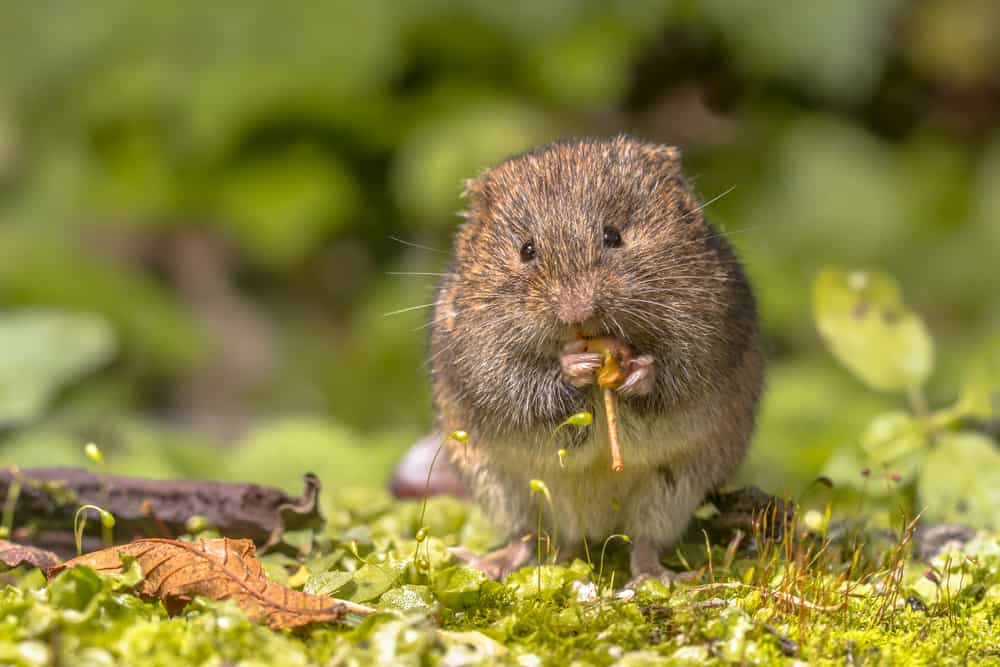
Not to be mistaken for moles, field voles are tiny rodents that live on several different continents. They are mostly seen in fields and areas with tall grass. Their food sources include various kinds of seeds, nuts, and bulbs.
Field voles only weigh around 0.71-1.4 ounces and are 3 to 7 inches long. To express their emotions, they will sing and make noise. The average life for a field vole is short, only about 3 to 6 months.
Similar:
- Rodents
- Eat seeds and plants
- Similar in features
Different:
- Field voles live on many different continents
- Field voles have a very short lifespan
- Muskrats are larger
Minks
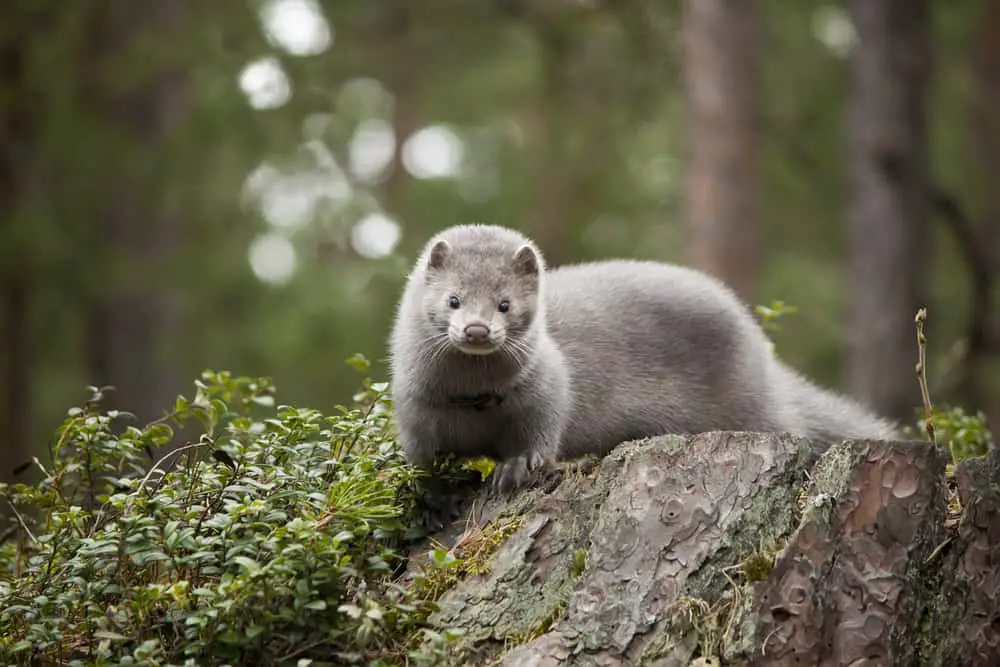
Minks are mammals that are native to North America. This means that many minks can be found in wetland habitats. They are carnivorous which means they eat fish, reptiles, and other small animals in their food chain.
A healthy mink weighs around 1.1-3.5 pounds and has a length of 13 to 18 inches. Minks are an independent species, foraging for food and building shelter alone. The lifespan of a mink is about 10 years.
Similar:
- Native to North America
- Both live in same habitat
- Around same length
Different:
- Have different body shapes
- Minks are carnivores
- Minks live longer
Black rats

Black rats can be found in all parts of the globe except Antarctica. Their main habitats are forests and other places with lots of shelters. They are smaller creatures, with a length of about 8 inches without the tail and an average weight of 7.05 ounces.
Rats tend to have aggressive behaviors, like ripping bark and leaves off of trees. They eat fruit, seeds, and several types of plants. The average lifespan for a black rat is about a year.
Similar:
- Short lifespan
- Herbivorous diet
- Can be found on North America
Different:
- Different color fur
- Rats are smaller
- Rats can be found in many more places
Golden-bellied water rat
These animals live primarily in Australia and its surrounding islands. They can be found in freshwater areas as well as places with brackish water. Water rats feed on different species of crustaceans, fish, and eggs.
On average they’re about thirty ounces and 7.9-15.3 inches long. They’re known to swim a lot and make burrows for themselves and their young. The lifespan of a golden-bellied water rat has not yet been discovered.
Similar:
- Can be found by water
- Around same size
- Known to swim
Different:
- Water rats eat meat
- Live in different places
- We don’t know the water rats lifespan
Marsh rabbits
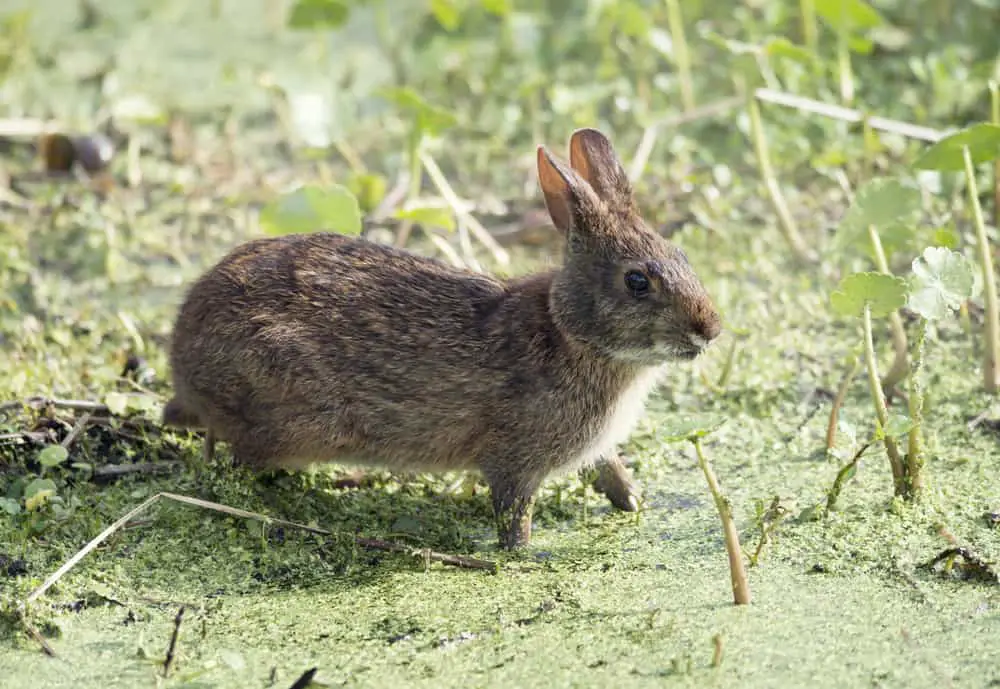
Marsh rabbits can be found in the southeast region of the United States and are classified as mammals. They like habitats with marshes and low elevations. Their weight is around 42 to 77 ounces and their length is around 16 inches.
This species is proficient at swimming and eats many plants that are found in the water. The average lifespan for a marsh rabbit is up to 4 years.
Similar:
- Found in the US
- Can be found in marshes
- Same lifespan
Different:
- Marsh rabbits are mammals
- Marsh rabbits have bigger ears
- Muskrats are slightly smaller
